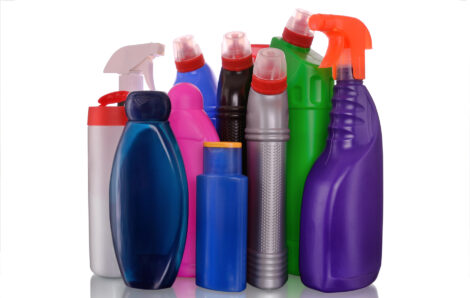This article is posted with permission from Environmental Working Group
Environmental Working Group (EWG)’s Guide to Healthy Cleaning reviews and rates more than 2,000 popular household cleaning products with grades A through F, based on the safety of their ingredients and the information they disclose about their contents.
In the making for more than a year, EWG’s Guide to Healthy Cleaning, the only one of its kind, has found that hazardous industrial chemicals lurk in far too many bottles and boxes under Americans’ sinks and on laundry room shelves.
Just 7 percent of cleaning products adequately disclosed their contents. To uncover what’s in common household cleaners, EWG’s staff scientists spent 14 months reading product labels and digging through company websites and technical documents. We researched ingredients and contaminants in 15 government, industry and academic toxicity databases and numerous scientific and medical journals. Read more at our website.
With EWG’s help, consumers can shop smart – and also change the marketplace by pressing the cleaning industry to come up with safer formulations and to label ingredients clearly and completely.
EWG’s key scientific findings:
- Some 53 percent of cleaning products assessed by EWG contain ingredients known to harm the lungs. About 22 percent contain chemicals reported to cause asthma to develop in otherwise healthy individuals.
- Formaldehyde, a known human carcinogen, is sometimes used as a preservative or may be released by other preservatives in cleaning products. It may form when terpenes, found in citrus and pine oil cleaners and in some essential oils used as scents, react with ozone in the air.
- The chemical 1,4-dioxane, a suspected human carcinogen, is a common contaminant of widely-used detergent chemicals.
- Chloroform, a suspected human carcinogen, sometimes escapes in fumes released by products containing chlorine bleach.
- Quaternary ammonium compounds (“quats”) like benzalkonium chloride, found in antibacterial spray cleaners and fabric softeners, can cause asthma.
- Sodium borate, also known as borax, and boric acid are added to many products as cleaning agents, enzyme stabilizers or for other functions. They can disrupt the hormone system.
- Many leading “green” brands sell superior products, among them Green Shield Organic and Whole Foods’ Green Mission brand. But not all cleaners marketed as environmentally conscious score high. Some “green” brands, including Earth Friendly Products, and BabyGanics, do not disclose ingredients adequately.
EWG recommends avoiding some products altogether because they’re unnecessary or there are no safer alternatives. Among them:
- Air fresheners contain secret fragrance mixtures that can trigger allergies and asthma. Open windows or use fans.
- Antibacterial products can spur development of drug-resistant superbugs.
- Fabric softener and dryer sheet ingredients can cause allergies or asthma and can irritate the lungs. Try a little vinegar in the rinse cycle.
- Caustic drain cleaners and oven cleaners can burn eyes and skin. Use a drain snake or plunger in drains. Try a do-it-yourself paste of baking soda and water in the oven.
“Natural” doesn’t mean non-toxic
Though plant-based ingredients don’t use petrochemicals, some plant-derived substances can cause allergic reactions. Some chemicals used in “green” product lines have not been thoroughly tested and get C’s for lack of safety data.
The scarcity of solid data about risks associated with cleaning product contents underscores the need for reform of the federal Toxic Substances Control Act of 1976, to require safety testing of chemicals on the market.
Consumers have a right to know
Ingredient labels are mandatory for food, cosmetics and drugs – but not for cleaning products. Manufacturers aren’t required to disclose all ingredients in their cleaners and many don’t, including some makers of “green” cleaners.
EWG urges consumers to tell manufacturers and legislators they want these products and any labeled with a complete list of ingredients, including individual chemicals in fragrance impurities present. Publishing ingredient information on the web or requiring consumers to telephone the company is not good enough.




